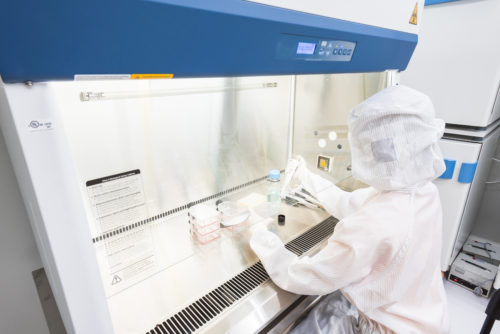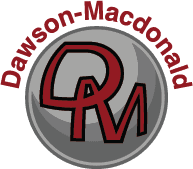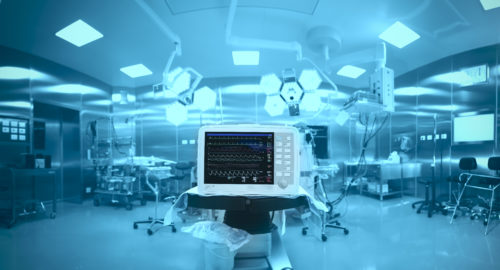The Need for Dust Collection in the Medical Equipment Industry

Many industrial manufacturing processes produce waste and byproducts. Dust particles and other particulates present an unseen hazard that goes unaddressed in many workplaces, resulting in negative impacts on employee health. Best practices and regulations across industries such as pharmaceuticals, mining, woodworking, and metalworking dictate that businesses must implement proper steps to protect workers from dust and particulates.
Dust collection regulations vary from state to state, but in general, these regulations are intended to protect the workforce and the community at large from poor air quality and emissions. The medical industry is no exception, as dust collection is essential for protecting the sanitary integrity of medical equipment and the health of those who manufacture it.
Why Do Medical Manufacturers Need Dust Collection Equipment?
Medical equipment is subject to very stringent regulations in all phases of development, manufacturing, and use. In terms of dust collection, medical and pharmaceutical manufacturers are subject to regulations from the U.S. Environmental Protection Agency (EPA), the National Fire Protection Association (NFPA), and the Occupational Safety and Health Administration (OSHA), among others. These organizations stringently regulate operational safety and manufacturing practices to ensure that workers are properly protected, and that goods produced are safe for use in sterile medical applications.
In addition to dust control, medical device manufacturers must also control mist. Mist is another industrial manufacturing byproduct produced by many machining processes and is equally as hazardous as floating dust particles. Mist consists of moisture particles containing oil, coolant, or other chemicals given off by machines during the course of normal operation. When left unaddressed, mist can coat surfaces and make them slippery, chemicals may be inhaled and pose a health risk to workers, and oils and other chemicals may contaminate manufactured medical devices. Mist filtration systems purify the air in the production area, making employees and their environment safer.
The exposure risk from dust, mist, and particulate byproducts is two-fold. Manufacturing workers bear the greatest risk, as they are prone to breathing in harmful materials but there’s also the integrity of the equipment to consider—especially in the medical device industry. Medical equipment must be as sterile as possible, especially for implantable devices and surgical equipment. Harmful dust and mist is tiny, often measuring just a few microns in size. This harmful material can easily permeate crevices, compromising the integrity and sterility of the equipment.
The advantages of installing a dust collection system are therefore numerous.
- Promotes employee health
- Improves workplace safety
- Ensures the quality of your products
- Increases employee retention
- Maintains regulatory compliance
- Enhances process efficiency
- Elevates bottom line
Critical Applications
Many common manufacturing processes produce mist and dust particles. The implementation of dust collection solutions is essential for controlling unwanted dust in applications such as:
- Grinding and deburring. Grinding and deburring are post-production processes meant to clean and smooth rough-hewn edges after principal machining is complete. Whether the substrate material is wood, plastic, metal, ceramic, or something else, grinding causes a large amount of dust byproduct.
- Sanding and polishing. Sanding and polishing are used to create a smooth surface finish, but they often generate a great deal of ultra-fine dust in the process. Whereas grinding addresses the material’s edge only, manufacturers perform sanding across the entire surface.
- Routing and cutting. Any form of blade- or tool-based cutting naturally produces dust particles. Dust collection equipment is often used in conjunction with cutting and routing equipment to address the resulting particles.
- Mixing and weighing. Pharmaceutical manufacturing and plastic-based manufacturing processes often require mixing granular powders together. Dust particles are stirred up in the process, creating the potential for cross-contamination.
- Blow offs. Once other post-production processes are complete, manufacturers often use equipment to blow excess dust off the surface of the finished product. This process cleans dust from the equipment surface, but often sends it into the air where it may be inhaled or settle in unwanted places.
- 3D printing. The plastic or metal material used by 3D printers initially comes in a resin or powdered form, which in some cases may be agitated into the air. Industrial dust collection equipment is essential to prevent your employees from breathing in harmful plastic or metallic particles.
Medical Dust Collection Solutions From Dawson-Macdonald
Dust collection equipment is an essential component of any manufacturing process. It helps to promote a safe work environment, keep employees healthy, and maintain compliance with governmental standards.
Industrial filtration equipment from Dawson-Macdonald can help protect your business from harmful dust, mist, and fumes. Our solutions use cartridge and bag collectors that are self-cleaning and are available with HEPA filtration. We offer machine mounted, stationary, and portable solutions to address a wide range of working conditions.
For more information, please contact us or request a quote today.




Comments are closed